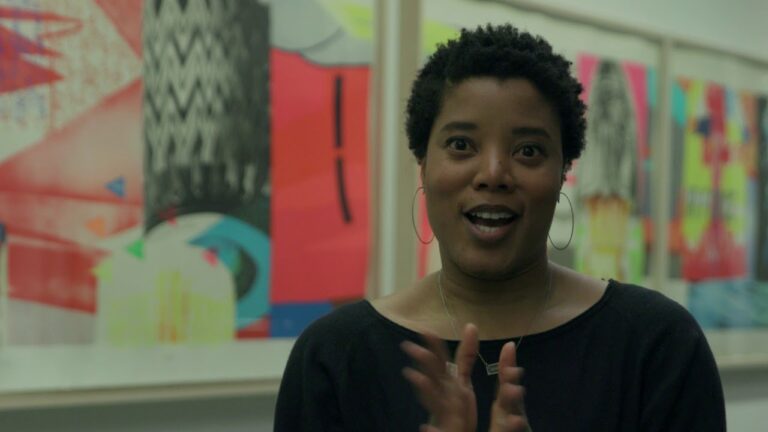High-paying Design Strategist job with exciting responsibilities
Design Strategist Job Description: A Design Strategist is responsible for developing and implementing innovative design strategies to enhance a company’s products, services, and overall brand image. They work closely with cross-functional teams, including designers, engineers, marketers, and product managers, to identify market trends, consumer insights, and business objectives. Design Strategists conduct research, analyze data, and collaborate with stakeholders to define design goals and create effective solutions that align with the organization’s vision. They also play a key role in conceptualizing and prototyping new product ideas, conducting user testing, and refining designs based on feedback. Additionally, Design Strategists may be involved in conducting design workshops and facilitating brainstorming sessions to stimulate creativity and foster collaboration within the team.
Design Strategist Salary: The salary of a Design Strategist can vary depending on factors such as experience, location, and the size of the company. According to industry reports, the average annual salary for a Design Strategist ranges from $70,000 to $120,000. Entry-level positions typically start around $50,000, while senior-level strategists with extensive experience can earn upwards of $150,000 per year. In addition to a competitive base salary, Design Strategists may also receive bonuses, profit-sharing, and other benefits. The salary range can also be influenced by the industry or sector in which the strategist works. Larger corporations and technology companies often offer higher salaries compared to smaller startups or non-profit organizations. Overall, a career as a Design Strategist offers both financial stability and the opportunity for professional growth in a dynamic and creative field.

Design Strategist Job Description Template
Design Strategist Job Description
A Design Strategist is a professional who combines design thinking and business strategy to create innovative solutions for organizations. They have a deep understanding of both design principles and market trends, allowing them to develop strategies that align with the goals and needs of the company.
One of the important roles of a Design Strategist is to conduct extensive research and analysis to identify market opportunities and consumer insights. They gather data on customer preferences, industry trends, and competitors’ strategies to gain a comprehensive understanding of the market. This information helps them develop creative and effective design solutions that meet the needs of the target audience.
Another crucial aspect of a Design Strategist’s job is to collaborate with cross-functional teams, including designers, engineers, marketers, and product managers. They facilitate communication and foster a collaborative environment where different teams can work together towards a common goal. By leveraging their expertise in design and strategy, they guide the development process and ensure that design decisions are aligned with the overall business objectives.
In addition, a Design Strategist is responsible for creating and presenting design strategies and concepts to stakeholders. They articulate the rationale behind their recommendations and provide insights on how these strategies can drive business growth and enhance user experiences.
Overall, a Design Strategist plays a critical role in bridging the gap between design and business. Their ability to combine creative thinking with strategic planning enables them to drive innovation and create impactful solutions that contribute to the success of the organization.
Design Strategist Responsibilities
Design Strategist Requirements
How Much Does A Design Strategist Make?
Design Strategist Salary
| Company | Salary Range |
|---|---|
| Company A | $70,000 – $90,000 |
| Company B | $80,000 – $100,000 |
| Company C | $90,000 – $110,000 |
| Company D | $100,000 – $120,000 |
A design strategist’s salary can vary depending on factors such as experience, location, and company size. The table above provides a general overview of salary ranges for design strategists in different companies. It is important to note that these figures are an approximation and individual negotiations may result in different salary agreements. Design strategists are responsible for combining design thinking and business strategy to create innovative solutions for companies. They play a crucial role in driving the success and growth of businesses through their expertise in design and strategy.
Design Strategist Salaries by Country
Top Paying Countries for Design Strategist
| Country | Average Salary (USD) |
|---|---|
| United States | 120,000 |
| Switzerland | 110,000 |
| Australia | 100,000 |
| Germany | 95,000 |
| United Kingdom | 90,000 |
Design strategists are highly sought-after professionals who play a crucial role in shaping the visual and strategic direction of companies. This table showcases the top paying countries for design strategists, based on average salaries. The United States leads the list with an average salary of $120,000, followed by Switzerland with $110,000 and Australia with $100,000. Germany and the United Kingdom also offer competitive salaries for design strategists, averaging at $95,000 and $90,000 respectively. These countries provide lucrative opportunities for design strategists to thrive and contribute to the success of organizations in the ever-evolving field of design.
A video on the topic Design Strategist
Interview Questions for Design Strategist
1. What is the role of a Design Strategist?
A Design Strategist is responsible for combining design thinking with business strategy to create innovative solutions that meet the needs of both the users and the organization. They analyze market trends, conduct user research, and collaborate with cross-functional teams to develop design strategies that drive business growth.
2. What skills and qualifications are required to become a Design Strategist?
To become a Design Strategist, one needs a strong background in design, business, and research. Key skills include critical thinking, problem-solving, communication, creativity, and a deep understanding of user-centered design principles. A degree in design, business, or a related field is often required, along with relevant work experience.
3. How do you approach the process of developing a design strategy?
I approach the process of developing a design strategy by first understanding the organization’s goals and objectives. Then, I conduct thorough research to gain insights into the target market and user needs. I collaborate with cross-functional teams to brainstorm ideas and create prototypes that can be tested and refined. Finally, I develop a comprehensive design strategy that aligns with the business objectives and addresses the identified user needs.
4. Can you provide an example of a successful design strategy project you have worked on?
One successful design strategy project I worked on was for a retail company that wanted to improve its online shopping experience. Through user research and analysis, we identified pain points in the existing interface and developed a strategy to simplify the navigation, enhance product discovery, and streamline the checkout process. The result was a significant increase in online sales and positive feedback from users.
5. How do you ensure that your design strategy is aligned with the organization’s overall goals?
To ensure alignment with the organization’s overall goals, I collaborate closely with key stakeholders, such as executives and product managers. I conduct regular meetings and presentations to keep them informed about the progress and seek their input. By involving them throughout the process, I can incorporate their feedback and make adjustments to the design strategy as needed.
6. How do you stay updated with the latest design trends and methodologies?
I stay updated with the latest design trends and methodologies by regularly attending design conferences, workshops, and webinars. I read industry publications, follow design influencers on social media, and join online design communities. Additionally, I actively participate in professional development programs and seek opportunities to learn from and collaborate with other design professionals.
7. How do you measure the success of a design strategy?
The success of a design strategy can be measured through various metrics, such as user satisfaction, conversion rates, sales growth, and market share. I utilize both qualitative and quantitative research methods to collect data and analyze the impact of the design strategy. User feedback, usability testing, and analytics tools help me assess the effectiveness of the strategy and identify areas for improvement.
8. How do you handle resistance to change when implementing a new design strategy?
When facing resistance to change, I first try to understand the concerns and perspectives of those resistant to the new design strategy. I then communicate the rationale behind the strategy and its potential benefits to both the organization and the end-users. I provide clear and concise explanations, address any misconceptions, and involve the resistant individuals in the decision-making process whenever possible. Building trust and fostering open communication are key in overcoming resistance to change.
9. How do you ensure that the design strategy remains relevant in a rapidly evolving market?
To ensure the design strategy remains relevant in a rapidly evolving market, I regularly conduct market research and stay updated with industry trends. I actively seek feedback from users and monitor their changing needs and preferences. I encourage a culture of continuous improvement and innovation within the organization, fostering an environment where the design strategy can evolve and adapt as necessary.
10. What role does empathy play in the work of a Design Strategist?
Empathy plays a crucial role in the work of a Design Strategist. By understanding and empathizing with the needs, desires, and pain points of the users, a Design Strategist can create solutions that truly resonate and add value. Empathy also helps in collaborating effectively with cross-functional teams, as it encourages a human-centered approach and fosters a deep understanding of different perspectives.






